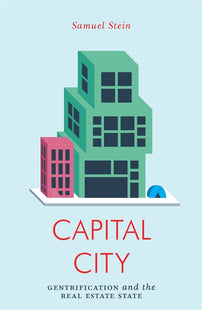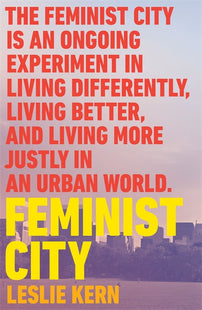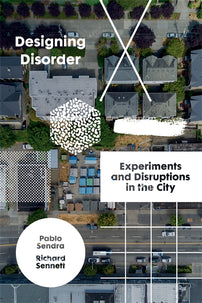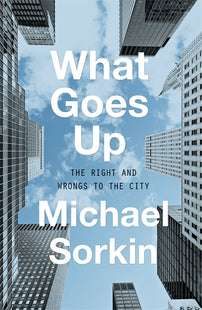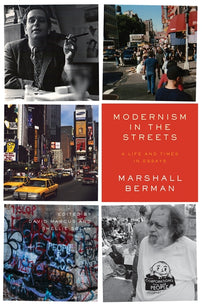Regeneration for the few; degeneration for the many
Belfast's Titanic Quarter has been heralded as the final act of a city passing from its dark past into its new status as a modern European capital. But, beyond the endless PR copy, what does urban redevelopment like that in Belfast tell us about where power resides in our towns and cities, and about the role of the real estate state in the process of gentrification?

“For our demands most moderate are,
We only want the earth.”
James Connolly
If you happen to walk along the eastern bank of the River Lagan, the river that rushes through the heart of Belfast, you will be confronted with the conundrum of the Titanic Quarter. Squint from practically any elevated spot in the city and its surrounding townlands and you’ll see Samson and Goliath, the two immense yellow Harland & Wolff dockland cranes named after Biblical figures venerated for their immense size and strength. At Titanic Quarter, old iconography bleeds into new. Close by, overlooking these windswept twin giants—monuments to Belfast’s shipbuilding past and the focal point of the Quarter's allure—is a six-storey museum dedicated to Titanic mythology. Designed to resemble the four hulls of a ship, the building’s glistening shards of anodised aluminium protrude, and ripple like ocean waves frozen in time.
Since opening in dribs and drabs at the turn of the century, this gargantuan 185-acre development, and its carefully choreographed tourist packages and variously empty and half-empty office buildings, have become visually inseparable from Belfast itself, a city now viewed as something of a poster child for post-conflict, post-industrial urbanism in ascent. Almost predestined to end up as mere fodder for vainglorious political speeches and Lonely Planet listicles, Titanic Quarter was sold to locals as an urban regeneration project to lift all boats. Long before its contemporary redevelopment, though, this area of the city was home to Harland & Wolff’s shipyard. The once-famed company's demise started as far back as the 1960s, but it’s true end was the mass redundancies of 2001 that finally ended shipbuilding in Belfast. Facing down the barrel of oblivion, the company sold its fossilised waterfront land and buildings to Harcourt Developments, one of Ireland’s largest property developers, for £47 million in 2003. The process of deindustrialisation, coupled with the intoxicating afterglow of the prosperity-promising Good Friday Agreement, had finally unlocked the land required for urban regeneration projects to sprout up along this formerly industrial riverside.
It seems that this had been the plan all along. Championing the buccaneering spirit of the free market and its capacity to “revitalise”, Colin Lewis of Invest NI, the public body responsible for encouraging private sector investment in the region, pronounced in the pages of The Irish Times in 2005: "Once Belfast had a terrible reputation and now it's regarded as normal.” Belfast is, in this purely capitalist sense, open for business once more. It is now irrevocably changed for the better from its old, ugly, perpetually embattled self—an underdeveloped market economy decades behind its European counterparts, blighted by violent sectarianism and political turmoil—present-day Belfast has shed its past in a capital-driven modernisation. Its sectarian and class cleavages have been overwhelmed by the powers of consumerism and regeneration; ample choice in cafes, plentiful choice of high-street retailers, and new student accommodation complexes. Untroubled by the lessons of other cities that have ventured headlong into the gentrification abyss, Belfast has hedged its economic future on hundred-million pound developments and urban regeneration schemes. It has, in other words, risen from the ashes of a bloody generational war by taking the cold, outstretched hands of global capital. Now, in 2020, the River Lagan does not flow alone: speculative capital darts freely and invisibly around the city, erecting huge developments, pushing up house prices, and displacing working-class residents.
The lack of organised street battles and daylight assassinations aside, the new normal summoned by Lewis and his ilk has not materially improved the lives of most working people in Belfast. As Peter Hodson noted last year, “communities that bore the brunt of shipyard deindustrialisation now also endure socio-economic exclusion from Titanic Quarter”. Based on his fieldwork in the city, Hodson encountered merely a stone’s throw from this tourism hotspot large pockets of deprivation, impervious even to this rising tide of gentrification.
*
In 2020, Belfast residents were hit with news of yet another planned megadevelopment. Despite organised and sustained local opposition led by the Save the Cathedral Quarter (Save CQ) group, the bipartisan Sinn Féin- and DUP-led coalition of Belfast city councillors approved a new £500m develop to be called the Tribeca project, an unintentionally self-parodying rebranding of the Cathedral Quarter area of the city. Drawn up by London-based Castlebrooke Investments, Tribeca’s mixed-use plans include office buildings, upmarket bars, retail outlets, high-end apartments, a new “public” square, and blotches of green space and courtyards, spanning 10 acres in the city centre. A haunting tagline, reading like the boardroom prophecy of a pinstripe suit-clad Wall Street scion, appears forebodingly on the investment company’s website: ‘Belfast will be changed for the good’.
Back in the 1980s, the cobbled streets in this section of the city, better known to locals as Northside, became home to community artists and a vibrant LGBT community. In an horribly familiar move, regeneration-minded bureaucrats and investment hawks sensed an opportunity. And so, targeting the underinvested area here around St. Anne's Cathedral, Laganside Corporation—a public-private development body set up by the British government—invested heavily in the area in the late 1990s. Independent business owners, students, and even more artists arrived, many of whom converted warehouses into studios and set up stall in old Victorian buildings. Clearly a means of fattening the goose before its eventual slaughter, Laganside not only renamed Northside as the Cathedral Quarter but also helped revamp the area’s Victorian character, installed workspaces for local arts groups, and offered grants to creative enterprises. As is the case with most gentrification projects, artistic character is first fetishised in order to seduce developers, and later to attract wealthy buyers and renters into the area. The valorisation of local artists, and their colourful contributions to poorer areas, is always a telltale sign that speculators are prowling.
Throughout 2020, Tribeca and its well-funded PR roll-out have perturbed large numbers of Belfast residents. Doubtless the product of some corporate brainstorming session, it’s hackneyed name is a Manhattanisation that is as alien to Ireland as baseball and corndogs. Despite the cack-handed moniker, Tribeca’s name is the least of local’s concerns. Citing reservations about the destruction of historic buildings, as well as the homogenisation of the cityscape, the anger that has surfaced among residents about this plan should come as no surprise. In both its current and previous incarnations (a project of this kind has been in the pipeline for years), critics allege the development is by turns ill-conceived, heritage-erasing, exclusionary, architecturally obnoxious, and liable to lead to further gentrification in the city. Mainly though, Save CQ argues that the reconstruction will replace “independent business and arts organisations with generic retail and offices.”
Across the globe, large-scale, multi-use real estate developments appear, at this point, to be an unstoppable force in urban life. Lured by tax breaks and the prospect of lucrative future rents, property speculators and developers swoop in on underdeveloped, disinvested areas, such as early 2000s Belfast, and devise plans to maximise rents. Visit any major modern urban centre and you'll see the same generically attractive vista—a blocky multiverse of luxury apartments, private student accommodation blocks, and towering glass offices. Airbnbs, pied-à-terres, and investment vehicles lie vacant, accumulating value as homelessness soars; homes shift ownership at lightning speed while homeownership plummets; bankers shuttle to work in minutes while office cleaners are forced to embark on super-commutes; a dastardly cottage industry of private homeless services emerges, preying on the people already impaled by housing market instability and unaffordability. Unsparing avarice shapes our cities more than ever before, irreparably damaging lives, razing buildings, and disfiguring local traditions. But while this is the endgame of unrestrained financialisation within housing and real estate, it is important to remember that these are man-made disasters.
*
For decades, urban policy in cities such as Belfast, London, and Dublin has been dictated by “agglomeration”, the concentration of economic activity in city centres. This process presupposes that broadly even spatial development across regions and towns to be futile, and imagines, in the words of Neil McInroy, “city centres as convenient and easy landing points for global financial capital.” Small wonder, then, that there is close to a political consensus on this: nobody questions whether land should even be a tradable commodity; whether property rights are sacred; and, most significantly of all, whether a buoyant real estate market truly means a buoyant city and state economy.
Yet there is plausible deniability regarding urban redevelopment projects and their roles in displacement. Projects like Tribeca are powered, their trusty cheerleaders insist, by a desire for improvement for all. Perhaps more telling than its advocates would ever suspect, the idea of improvement itself is bound up with the hunt for profiteering and restless accumulation. As Ellen Meiksins Wood wrote in relation to the theory of land improvement during the dawn of agrarian capitalism, “'Improved’ farming, for the enterprising landlord and his prosperous capitalist tenant, ideally though not necessarily meant enlarged and concentrated landholdings”. In much the same way, in modern built environments, the seemingly innocuous language of improvement is also not all that it seems. It is used, akin to a real estate omerta, to refer to the acceleration of urban capital accumulation and gentrification.
For what now seems an eternity, the arguments about the state of our cities have, rightly, centred around gentrification, although incited not so much by the oftentimes hidden human displacement but rather the sight of cranes and boxy towers of glass and metal as well as the arrival of yuppies, artisanal stores, and the eminently uncreative creative class. Gentrification has evolved over time from academic esoterica into pub chatter. It is at once hotly contested and conventional wisdom; simultaneously everywhere in our discourse and nowhere in our policy fixes. True enough, the relentlessness with which finance capitalism eats up urban spaces is known to most city dwellers. And with the obscenely rich living side-by-side with the obscenely poor, separated only by private security, fortress-like gates, and coercive policing, the unevenness of city development is laid bare. But we need to be more incisive with our prognosis, to pinpoint precise reasons why our cities are only working for the hyper-affluent and absentee investors.
In his 2019 book, Capital City: Gentrification and the Real Estate State, urban geographer Samuel Stein attempts to do just this. He addresses with startling clarity the growing centrality and concentration of capital into real estate, largely through the lens of urban planning, the process by which we design our cities. Urban planning, once an everyday consideration of city officials, has transformed into a profession in its own right, completely in thrall to what Stein calls the “real estate state”: a “political formation in which real estate capital has inordinate influence over the shape of our cities, the parameters of our politics, and the lives we lead”. Planning, while a public function, is beholden to private interests; after all, it’s role is mostly to regulate private actions. It naturally follows, then, that planners “are tasked with the contradictory goals of inflating real estate values while safeguarding residents’ best interests.”
In the real estate state, local governments cede control over residents' lives to private interests, with dire consequences. Trained as an urban planner himself, Stein paints a bleak yet panoptic picture of the role of real estate in the modern metropolis, ploughing down into the reasons how we can begin to salvage a sense of control, and power, over the direction of our neighbourhoods and cities. Under this political formation, real estate interests—deeply entwined with financial capitalism and its myriad computations, mutations, and fluctuations—possess outsized sway with planning decisions, particularly at the local level, where most physical planning occurs.
Unsurprisingly, Stein speaks to these developments from an American, and more particularly a New York, perspective, foregrounding local struggles, many of which he has had direct involvement. Yet Belfast does not differ qualitatively from its supercity counterparts. Here, urban planning also falls under the rubric of civil servants known as urban planners, whose role in our cities, Stein writes, has “devolved from reshaping space to retaining investment.” Planners are thought of as thoroughly apolitical, arbitrary bureaucrats, responsible only for sculpting dioramas, managing zoning decisions, and sorting through development proposals. In truth, they are massively influential figures. But their power to reshape cities, and in turn intensify displacement, would be lesser were it not for other forces and long-term trends.
[book-strip index="1" style="display"]Over successive generations, deindustrialisation has seen real estate transform from a secondary source of urban capital accumulation to the de facto source, “something approaching monopoly power to shape the narrative around urban planning and urban futures”. In other words, traditional manufacturer demands—cheap rents to maximise profits; low-cost housing to deter higher wage demands; decent public services to attract workers—differ radically from that of financiers and property developers, for whom land is purely speculative. Or, as David Harvey famously put it, land is a “fictitious form of capital that derives from expectations of future rents”. For Belfast residents, particularly those predominantly Protestant workers who remember a booming shipbuilding hub, the idea that real estate comes to fill the vacuum left by industry will ring especially true.
In cities across the globe, megadevelopment blueprints regularly draw the ire of locals. Though city residents welcome new amenities and aesthetic improvements, there is a gnawing sense that community benefits are limited, if not in the negative. Urban regeneration plans tend also to be couched in the magical language of inclusion and diversity, or even collaboration. Often trumpeted as hard-boiled, municipal democracy in action, participatory planning, as Stein explains it, creates the illusion of “openness and transparency to maintain public legitimacy”. Residents fill in consultation forms and speak animatedly at meetings, voicing their concerns and objections—yet cosmetic tweaks and “we’ll take that on board” courtesies are the best they can hope for.
And, wholly unsurprisingly, when a city is reorganised solely around the needs of distant landlords and offshore banks accounts, there is no avoiding large-scale dispossession and displacement. Scholars refer to neoliberal cities as utopias of exclusion, but we should go further: our urban centres are for the underclasses dystopias of violent evictions and expulsions. Heed the nakedly malevolent admissions of Stephen Schwarzman, the billionaire chief executive of the world’s largest landlord, Blackstone Group. In the aftermath of the financial crash, he described the private equity fund’s plans for land looting of distressed assets in Europe. Distilling the real estate state down to its basest, most elementary instincts, he admitted that the group was “basically waiting to see how beaten up people’s psyches get, and where they’re willing to sell assets….You want to wait until there’s really blood in the streets.”
Equally disturbing is the sight of developers and investors assigning to themselves the status of indispensable political-economic actors, benignly granting regular people their generous cash cow developments. Indeed, the aggressive promotion of job packages—a Trojan horse for urban capital accumulation—is integral to the real estate state’s reproduction, particularly in the arena of politics. Urban planning seeks to make developments such as Tribeca seem to be in the best interests of all workers. But this is mostly a smokescreen. On overtures to corporations and property developers, Invest NI spent in the first 5 years of its existence almost £1 billion, leading to the creation of a meagre 328 stable jobs, the majority of which will not be aimed at those living in impoverished estates ravaged by the city’s deindustrialisation.
Here is another catch-22 in which we find ourselves. City councils and urban planners, from Belfast to L.A., Manchester to Paris, are tasked with addressing housing crises while, at the very same time, being straitjacketed by an inability to both build public housing and enact any reasonable rent controls—creating a paralysis which foments evictions, gentrification, and other unwanted symptoms of rampant urbanisation. But, as geographer Michael Rafferty astutely pointed out this year in relation to Dublin, there is space here for agitation. “What is serially overlooked,” he argues, “in almost all relational cities is the labour intensity of maintaining the sterile glass office towers, soulless overpriced restaurants and glibly kitsch wine bars which come with the new, transient bourgeoisie”. If we examine the underside of the jobs package rhetoric, urbanisation and GDP-focused growth of the kind planned for Belfast “quietly creates an alienated, detached and atomised working-class (both white collar and blue collar), which contends with heightened unaffordability, long commutes and precarious, hamster-wheel employment now common to the service economy”.
Learning about the aims of the real estate state is one thing, action is another. Radical change in our cities must start with us dismantling the real estate state. Lest we forget, real estate animates almost every site of political struggle in the city. Trade unionists and workers regularly cite spiralling housing costs as justification for higher wages, environmentalists rage their wars in urban centres against fossil fuel headquarters and toxic air pollution, and the fight to eradicate homelessness hinges upon the right to a home. No matter where you look, it’s there. But workers and tenants in cities must organise if we wish to wrench from the real estate state its grip on land which consigns so many to indebtedness, managed decline, and destitution.
Movements for change may soon bloom, invigorated by the looming eviction cataclysm, mass layoffs, and, above all, an unvanquishable anti-elite rage. Where they emerge, they must demand popular control of urban space. And whatever about any Marxian end goal of wholly decommodifying land, it is clear that disrupting eviction notices, building social housing, and developing some forms of community land trusts and municipal land banks—all in the name of insulating people’s right to affordable housing from the yo-yoing of the market—should be argued for. Urban planning must also be reimagined, inspired by interventions such as Stein’s. Conceived on a democratic basis, as a profession of choice for radicals, planning could re-energise working-class areas and ward off runaway gentrification, giving people a real stake in developments such as Tribeca, or blocking them altogether in lieu of something more community-centred and redistributive.
Between profligate property developers and compliant urban planners, privatisation plans and surveillance technologies, empty luxury developments and endless rows of multinational chain stores, our streets are becoming ever more lifeless. Physically and psychically, they teeter on the edge of obsolescence. They're poised to become increasingly virtual, junked, predictable, fragmented, sanitised, and deafeningly empty. But unlovable as our cities may seem at times, they are where we exist and coexist, and things can only get worse without organised resistance. That is, I think, what is endlessly magnetic about the city, what entraps us in a perverse love-hate relationship with these places: the capacity of the urban to so beautifully and comprehensively encapsulate the human condition. The latent communalism; the everyday interdependence and disinhibition of bustling streets and large gatherings; the hidden and unhidden networks of shared passions; the abundance of life and love and culture in close quarters. The city has, by and large, always been the main historical location of political revolt and action. And rather than accepting proposals which hinge on a vague revival which only ever trickles upward, we must be unstinting in our demands: that the earth here, as anywhere else, is ours. Luxury development is the solution to nothing except shoring up the political power and surpluses of the rapacious rentier class—and regeneration for the few is degeneration for the many.
Colin Gannon is an Irish journalist based in London.
[book-strip index="2" style="display"]